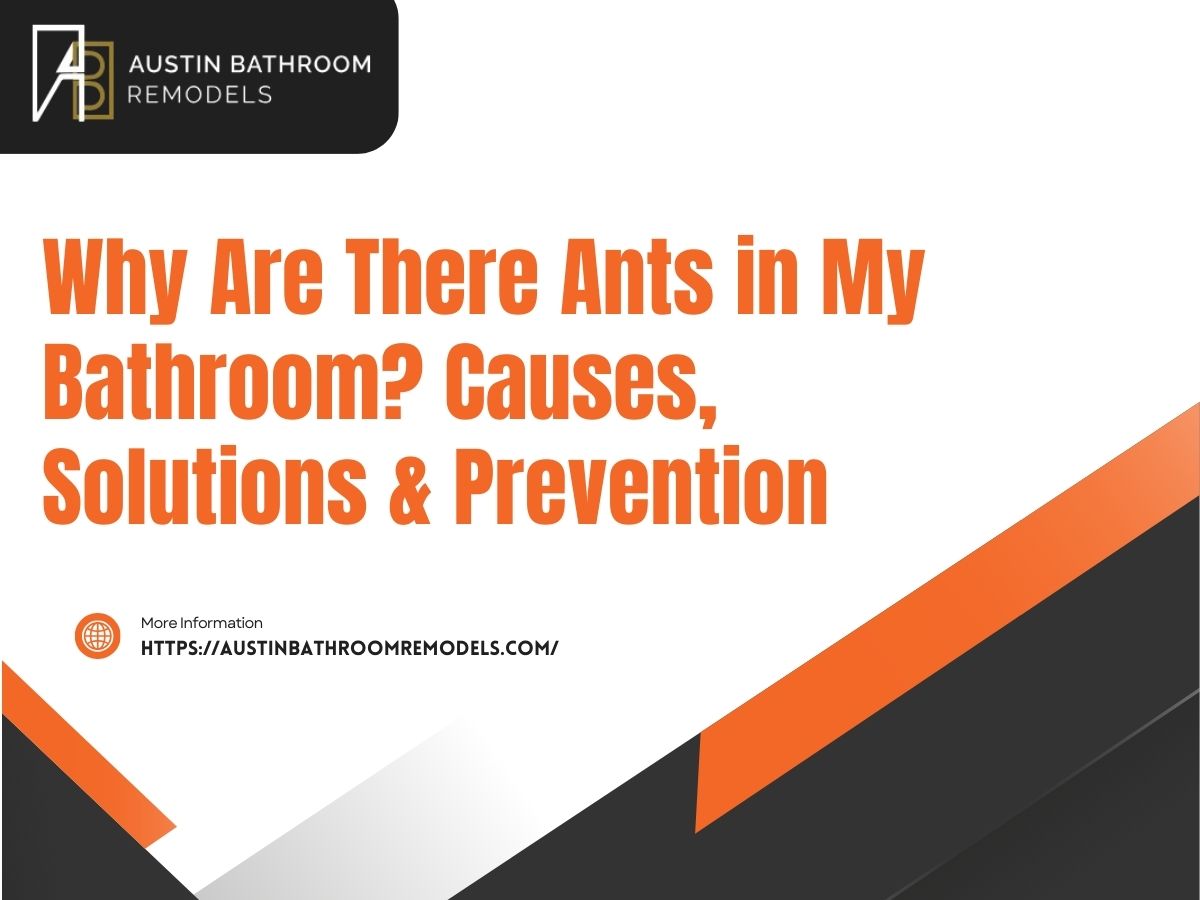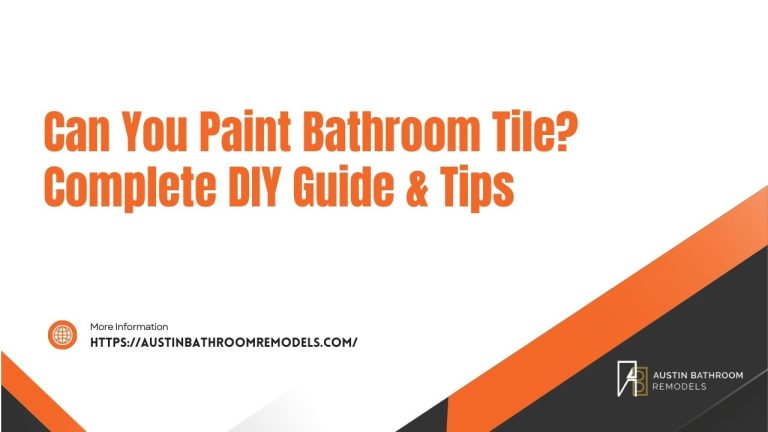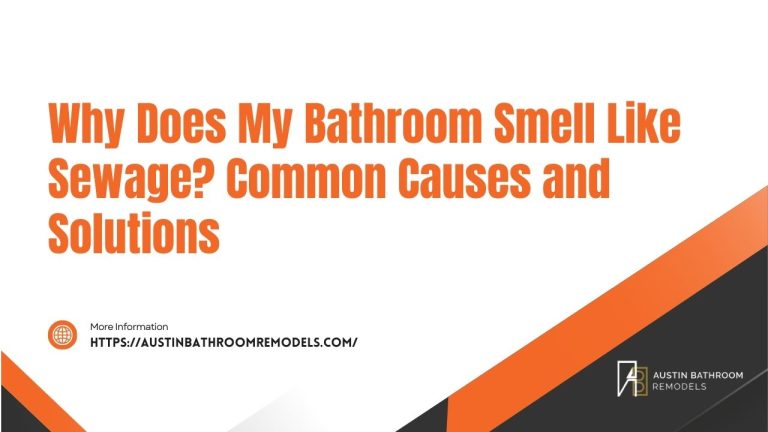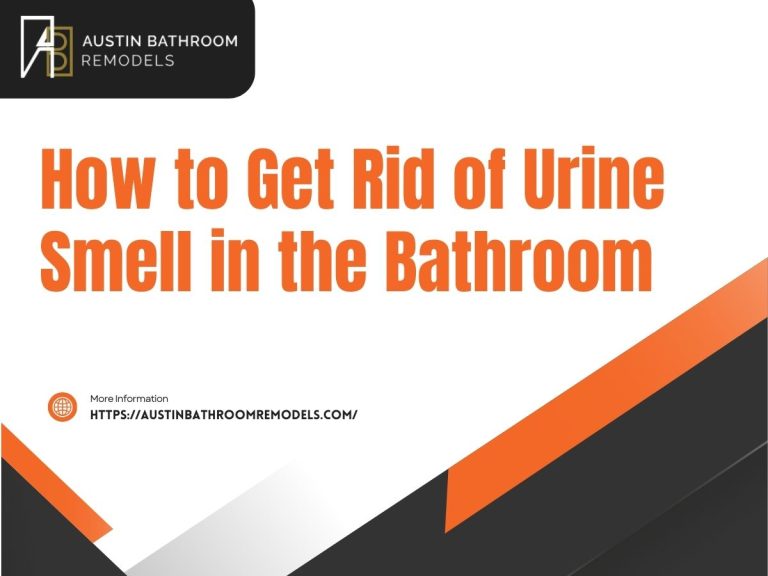Why Are There Ants in My Bathroom? A Complete Guide
Finding a trail of ants marching across your bathroom floor can be unsettling. Your first thought might be, “What are they even doing here?” Unlike the kitchen, the bathroom doesn’t seem like an obvious target for pests. However, seeing ants in the bathroom is a common problem for many homeowners. These tiny invaders are drawn to this space for specific reasons, and understanding them is the first step toward getting rid of them for good.
This guide will walk you through why you have ants in your bathroom, how to identify them, and the best ways to send them packing. We will cover natural solutions, effective pest control methods, and long-term prevention strategies to keep your bathroom ant-free.
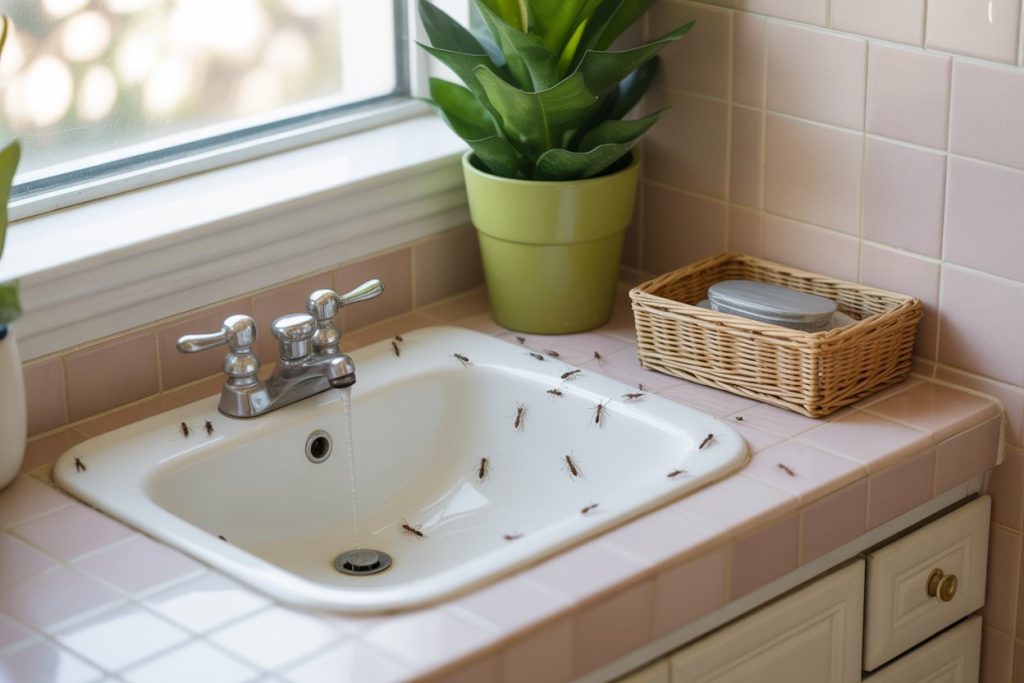
Common Reasons for Ants in the Bathroom
Ants are resourceful creatures on a constant search for two things: water and food. Your bathroom, surprisingly, can offer both. Let’s break down the main attractions.
An Oasis of Moisture
Water is life, especially for ants. Bathrooms are naturally humid environments, and this moisture is a major draw.
- Leaks: A tiny drip from a faucet, a leaky pipe under the sink, or a shower head that doesn’t fully shut off creates a constant water source.
- Condensation: Water droplets on pipes, the toilet tank, or windows provide enough moisture for thirsty ants.
- Standing Water: Puddles on the floor, damp towels, or wet bathmats can act as a watering hole for an entire colony.
Hidden Food and Shelter Sources
While you don’t store food in the bathroom, ants can find sustenance in unexpected places. They are also looking for safe places to build nests.
- Organic Matter: Clogged drains filled with hair, soap scum, and other organic debris can be a food source for some ant species.
- Scented Products: Sweet-smelling soaps, lotions, and even some toothpastes can attract certain types of ants.
- Structural Materials: Carpenter ants, in particular, are drawn to damp or rotting wood, which can be found in walls or flooring damaged by leaks.
Easy Entry Points
Ants are tiny and can exploit the smallest openings to get inside. Your bathroom might have more entry points than you realize.
- Cracks and Gaps: Small cracks in the foundation, gaps around windowsills, or openings where utility lines enter the house are perfect highways for ants.
- Vents and Drains: Bathroom vents and drains provide direct access from the outside or from within the walls.
Also Read Why Does My Bathroom Smell Like Sewage?
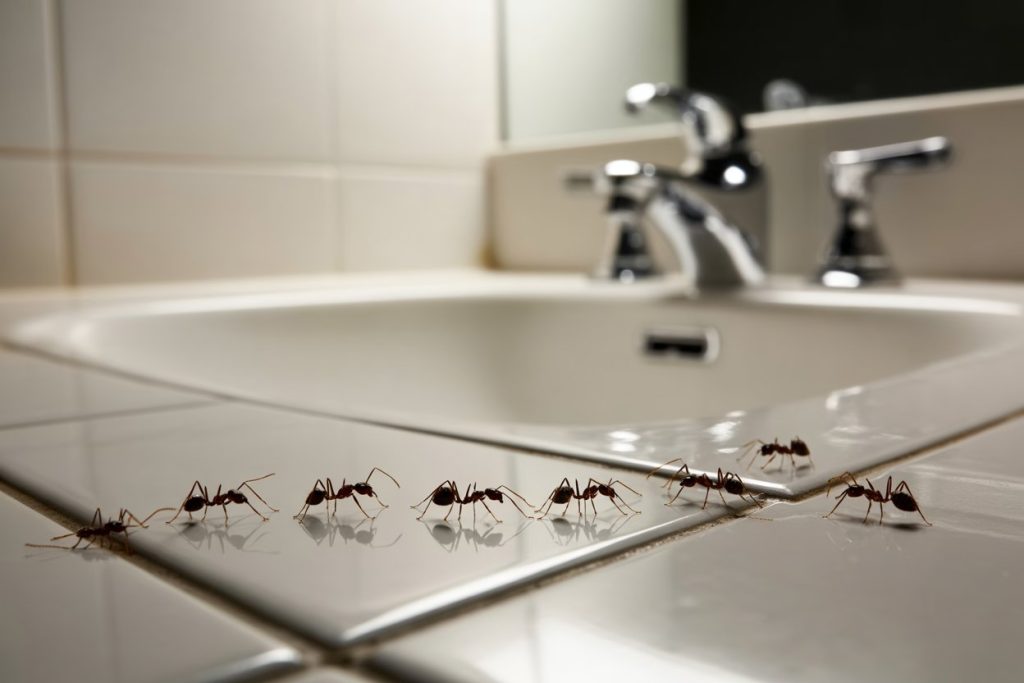
Types of Ants Commonly Found in Bathrooms
Identifying the type of ant in your bathroom can help you determine the best course of action. Here are a few common culprits:
- Carpenter Ants: These are large, black or reddish ants. They don’t eat wood, but they tunnel through it to create nests, especially if the wood is damp. Finding carpenter ants in the bathroom is a major red flag for moisture damage.
- Pharaoh Ants: These are very small, yellowish-brown ants. They are notorious for being difficult to control and are often drawn to moisture and warmth. They can nest inside wall voids, behind baseboards, and even in electrical outlets.
- Argentine Ants: These small, dark brown ants travel in distinctive, wide trails. They are attracted to moisture and will seek shelter indoors during hot, dry weather or heavy rains.
Signs You Have an Ant Infestation
Sometimes, a few stray ants are just scouts. But other signs point to a more significant problem.
- Ant Trails: The most obvious sign is seeing established trails of ants marching to and from a water or food source.
- Frass: Carpenter ants leave behind piles of coarse sawdust-like material called frass. You might find this near baseboards, windows, or under sinks.
- Nests: You might discover an ant nest in a wall void, under tiles, or inside a damp cabinet.
- Winged Ants: The presence of winged ants (swarmers) indoors is a sure sign of a mature, active colony nearby.
Also Read How to Get Rid of Urine Smell in the Bathroom?
How to Get Rid of Ants in Your Bathroom
Once you’ve confirmed an infestation, it’s time to take action. You can start with natural methods before moving on to chemical solutions if needed.
Step 1: Clean and Remove Attractants
Your first step is to make the bathroom less inviting.
- Fix Leaks: Repair any dripping faucets, leaky pipes, or running toilets immediately. This removes their primary water source.
- Clean Thoroughly: Scrub floors, sinks, and showers to remove any soap scum or organic buildup. Use a drain cleaner to clear clogs.
- Reduce Moisture: Use the exhaust fan during and after showers, wipe up any standing water, and hang wet towels and bathmats to dry.
Step 2: Use Natural and DIY Solutions
Many household items can be effective against ants.
- Vinegar and Water Solution: Mix equal parts white vinegar and water in a spray bottle. Spraying this directly on ants kills them and also erases their scent trails, preventing others from following.
- Borax and Sugar Bait: This is a highly effective method. Mix one part borax with three parts powdered sugar. Place small amounts of the mixture on a piece of cardboard near ant trails. The ants will carry the bait back to the colony, eliminating it at the source. Caution: Keep borax away from children and pets.
- Diatomaceous Earth: Sprinkle food-grade diatomaceous earth along baseboards, under the sink, and in other dry areas where you see ants. This natural powder dehydrates and kills insects that walk through it.
Step 3: Using Pest Control Products
If natural methods aren’t enough, you can turn to commercial products.
- Ant Baits: Gel or station baits work similarly to the borax mixture. They are a slow-acting poison that worker ants take back to the nest, effectively killing the queen and the entire colony. This is often more effective than sprays.
- Insecticide Sprays: Use sprays designed for indoor use and target entry points like windowsills and cracks. However, sprays only kill the ants they touch and won’t eliminate the colony.
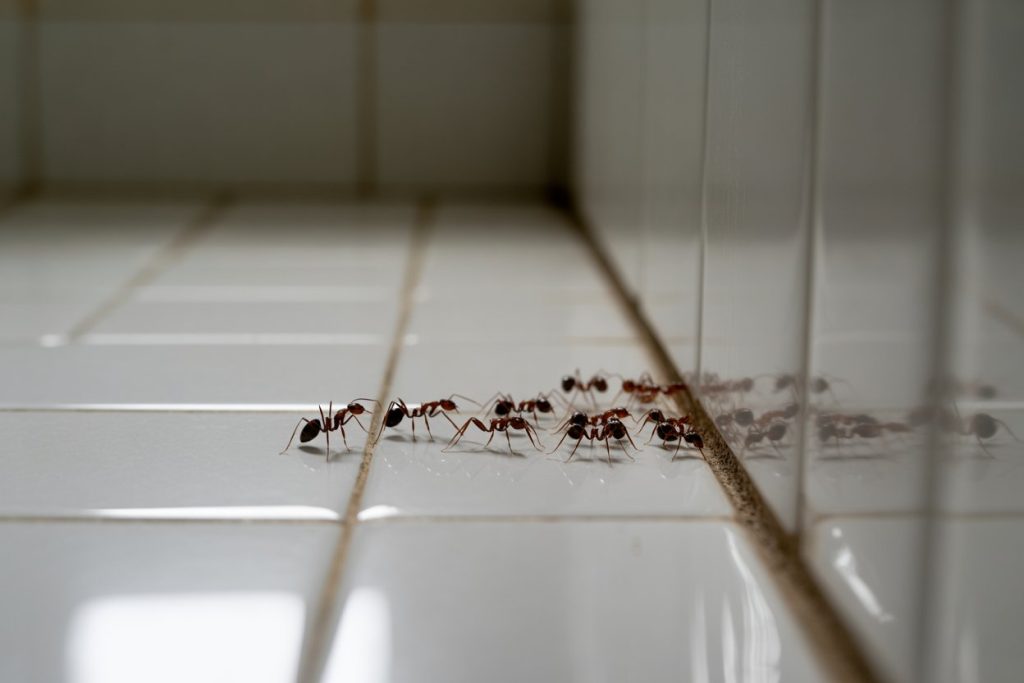
Permanent Prevention: How to Keep Ants Out
Getting rid of the current ants is only half the battle. To keep ants out of the bathroom for good, focus on prevention.
- Seal Entry Points: Inspect your bathroom and the home’s exterior for cracks and gaps. Use caulk to seal any openings around pipes, windows, and baseboards.
- Maintain a Dry Environment: Continue to address any moisture issues. Consider using a dehumidifier if your bathroom is consistently damp.
- Regular Cleaning: Keep drains clear and regularly clean all surfaces to remove potential food sources.
- Exterior Maintenance: Trim back any tree branches or shrubs that touch your house, as these can act as bridges for ants.
When Should You Call a Professional Exterminator?
While many ant problems can be handled on your own, some situations require professional help.
- Carpenter Ant Sighting: If you suspect you have carpenter ants, call a professional immediately. They can cause significant structural damage that needs to be assessed and treated by an expert.
- Persistent Infestations: If you’ve tried everything and the ants keep coming back, a professional can identify the colony’s source and use commercial-grade treatments to eliminate it.
- Large-Scale Problems: If you see ants in multiple rooms, not just the bathroom, it likely indicates a large, established infestation that requires professional intervention.
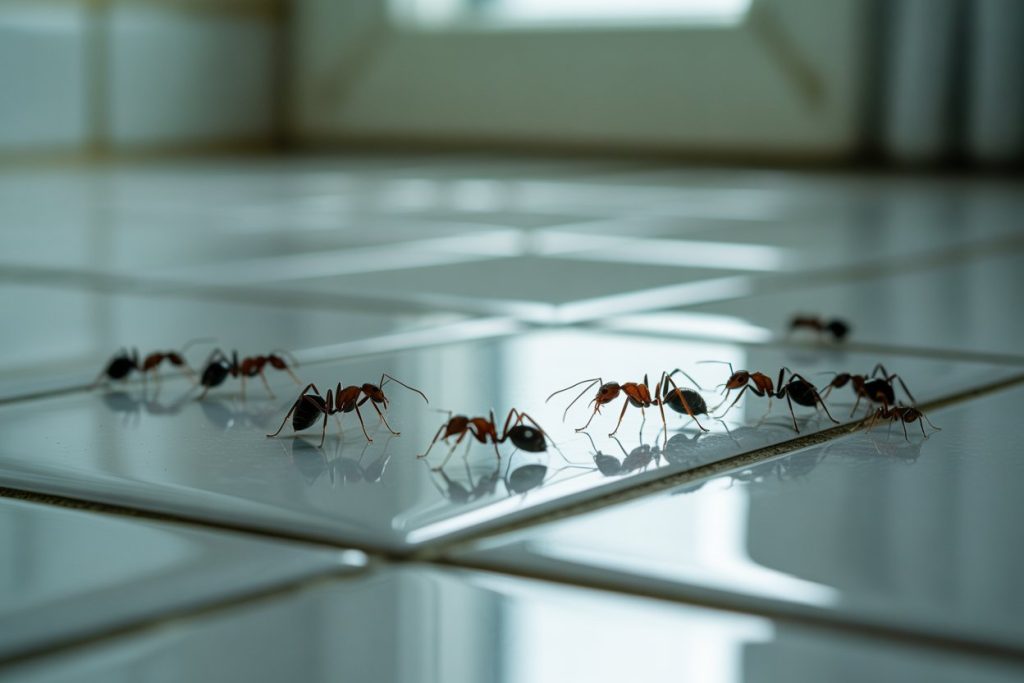
Conclusion: Reclaim Your Bathroom from Ants
Finding ants in your bathroom is a nuisance, but it’s a solvable problem. By understanding that ants are primarily seeking moisture, you can take targeted steps to make your bathroom less hospitable. Start by eliminating their water sources, cleaning up potential food supplies, and sealing off their entryways. Whether you choose natural solutions or commercial baits, consistency is key.
Don’t let ants turn your private sanctuary into their personal spa. Take control of the situation today. If the problem feels too big to handle, don’t hesitate to call a pest control professional to ensure your home is protected.
Frequently Asked Questions (FAQs)
Q: Why are ants suddenly in my bathroom?
A: A sudden appearance of ants is often linked to a change in weather (like heavy rain or a dry spell) that drives them indoors in search of water and shelter. It could also indicate a new leak or moisture issue that has developed.
Q: Can ants come up through the bathroom drain?
A: Yes, ants can travel through plumbing pipes and emerge from drains, especially if the drain is clogged with hair and soap scum, which they can feed on. Keeping your drains clean can help prevent this.
Q: Are ants in the bathroom a sign of a bigger problem?
A: It can be. While sometimes it’s a minor issue, ants in the bathroom can also signal a hidden water leak or, in the case of carpenter ants, potential structural damage to your home. It’s always best to investigate the cause thoroughly.
Need professional help with a persistent ant problem? Contact us today for a consultation and let our experts provide a lasting solution to keep your home pest-free.
If you need Bathroom Remodeling services in Austin, Texas, you can also reach us.
